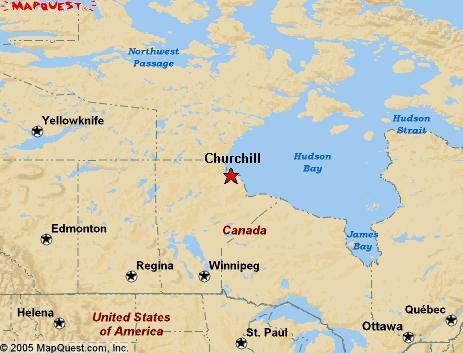
You’re a polar bear. You’re hungry. You’re bored. You’re too hot.
The ice went out early in July and now there’s nothing to do. You snuffle around in the lines of seaweed and kelp the tide washes ashore a couple times a day, but there aren’t any big fat ringed seals lurking in there. You scarf up some grass but it doesn’t even amount to a mouthful, much less a tummy full.
What to do, what to do…
You wander along the shoreline, looking for ice. Nothing as far as you can see. There’s a bear over there. Maybe he wants to wrestle.
Okay, that was fun for a couple minutes, but it’s way too hot out here for that. And you’re still hungry. Still bored.
Oh, no, here come those big white things with the appetizers on the back. They smell good, but you can’t reach them. Tricky things. Someday, though, someday you’ll catch one. You’re a lot more patient than they are. They’re always clicking at you, like they’re nervous. Pointing those things at you and clicking.
Maybe there’s ice farther north. Maybe you’ll just mosey on up that way.
The farther you walk, smells fill the air. Mmmm…. Fresh bread from Gypsy’s…. and something else. Mmmmm bacon…bacon-cheeseburger. Yeah, that’ll be nice.
No, wait. You remember the last time you went into town? That loud noise? Better stay away from there. Go check for ice.
Hmmm… Nothing at Cape Merry. No picnickers.
Oh, for a seal. The smell of seal. Seal, seal, seal, gonna find me some seal. I smell SEAL!!!
There it is. Can’t get at it. Better check for its breathing hole.
Ah, ha. Now I can get it.
(CRASH)
MMMMAAAAAAAA!!! What? What happened? I can’t get out of here. And that wasn’t a seal, either. Just a rag soaked in seal oil.
***
And so, another polar bear winds up in polar bear jail, or, more appropriately, the Polar Bear Holding Facility located by the airport in Churchill.
Capable of holding 23 troublesome bears, the facility is in a double-wide Quonset shaped building by the airport. Bears caught in the live trap are transported here, the trap backed up to a cell, and the escape hatch raised. The conservation officer pounds on one end and the bear scampers out into the holding cell.
The pickup and culvert trap leave the building and the exterior doors are closed. Dim lighting. Other bears. Sows and cubs in larger cells at one end.
There’s controversy about this program. Some claim it’s cruel. The bears aren’t fed, but then, they don’t eat if they’re loose on the tundra either. They’re given water and snow when it’s available. When the ice forms, the bears are released and urged towards it with cracker shells if necessary.
Occasionally, if the facility nears capacity, bears gain early release and are slung beneath a helicopter for a 40 mile journey north—far away from humans.
 |
| Bears are sedated and their eyes covered while being transported. |
Polar bear jail is only for bears that make repeated forays into Churchill or otherwise cause trouble.
In 2009, there were more than 300 “incidences” involving polar bears near human habitats. There is a 24-hour a day patrol around Churchill and all residents know the phone number to report a bear sighting.
Conservation officers in Churchill can have as many as a dozen bear encounters before noon each day, according to one officer. Most of the bears are scared away with cracker shells fired from .12 gauge shotguns. The live traps have replaced leg snares, which required sedating the animal so it could be moved.
 |
| No longer used leg snare. Bait would be placed in the narrow end of the timbers. |
I suppose when compared with a life roaming the shoreline, being held in a cell for a few months can be considered cruel. The facility isn’t meant to be a bed and breakfast for polar bears.
But, the alternative also is cruel—and fatal. Polar bear jail gives the carnivores a chance to continue living.




















































